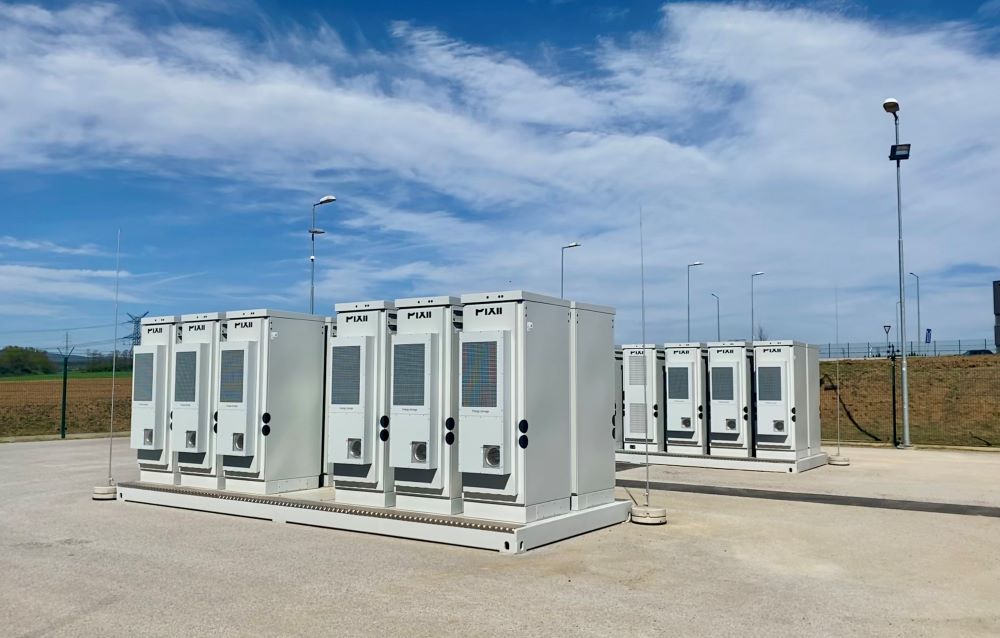Global warming and climate change are no longer just general concepts, but our daily reality. According to the current Decree of the Ministry of Economy of the Slovak Republic No 152 of 2005, the heating season usually starts on 1 September. This year, at the beginning of September, the daily air temperature in the hottest places in Slovakia reached 35 degrees Celsius. What was unimaginable for us a few years ago is now a reality.
The serious problem of climate change is currently being addressed at European Union and Member State level, and decarbonisation is one possible way forward. Under the European Green Deal, the European Union has set a target of reducing carbon emissions by 55% by 2030. Its ambition is to be carbon neutral by 2050.
A challenging goal calls for challenging solutions. And that is why we are currently witnessing a massive debate on decarbonisation in the energy sector, across all sectors in our economy. High-energy consuming industrial companies are most affected by the decarbonisation targets. But smaller companies are also tackling emissions reductions because they realise that they may lose their competitive advantage in the future by not acting in this area. It could be said to affect the whole supply and demand chain. Which may mean that whoever does not start decarbonisation now will not be in business in a few years’ time.
The prediction is clear, but where to start?
Companies are realising that if they want to meet their decarbonisation KPIs in just a few years’ time, they need to start as soon as possible. However, as these are often long-term investment decisions, it can be difficult for them to choose the appropriate decarbonisation measures. This is especially so given the lack of experience, expertise and the associated uncertain outcome and return on investment.
We at ENGIE recommend our clients to start preparing a long-term decarbonisation strategy. And devote sufficient time and effort to it. Because a poorly set strategy will not get them closer to their goal, quite the opposite.
What should an energy decarbonisation strategy include?
1. Decarbonisation targets
2. Analysis of the current state of operations
3. Proposal for selected decarbonisation measures
4. Financing method, investment plan
5. Implementation timetable
6. Energy supply plan
7. Ensuring efficient operation
What are the barriers to implementing decarbonisation solutions in the energy sector?
Even when companies have a decarbonisation strategy in place, they may still have doubts and face obstacles that prevent them from fully starting to implement it.
One of the most common obstacles can be the financial complexity of the project and the lack of own investment funds. Recognizing that clients prefer to invest in their own core business, we offer them the opportunity to co-finance projects in partnership through a Power Purchase Agreement (PPA) and a Thermal Purchase Agreement (TPA).
Often we encounter that clients are unable to implement energy decarbonisation measures because they do not have enough skilled technical staff. This problem is usually solved by working with a stable partner that has its own expert teams from design, implementation to operation of the energy equipment.
A final issue may be the fear of a poor strategic decision regarding the choice of an energy partner. And since decarbonisation projects are financially, time-consuming and implementation-intensive, the choice of a solution provider is crucial. In the case of cooperation set up over decades, we are already talking more about partnership. Project conditions can change over the years due to technology development and climate change, so it is important to work with a stable partner that provides comprehensive long-term solutions and can react flexibly to possible changes.
One measure is usually not enough to meet decarbonisation KPIs
At ENGIE, we take a holistic view of energy. We know from experience that clients will only achieve their KPIs by combining multiple solutions that will also help them:
– increase energy efficiency,
– reduce energy costs,
– reduce CO₂
– and kick-start the circular economy.
And when we talk about measures, we are thinking in particular about the use of renewable energy sources, such as:
– Photovoltaics
– Biomass
– Heat pumps
– Battery storage
– Cogeneration
– Biomethane
– Biogas
– Hydrogen
– Wind
Helping clients meet their energy decarbonisation goals
ENGIE, as a leading international player, has been in the energy sector for decades. We understand our clients’ decarbonisation needs, as our own strategic goal is to achieve zero carbon emissions by 2045.
In addition to our practical experience, expertise and dozens of reference projects, we also own renewable energy plants and facilities. We look at the energy industry as a whole and provide comprehensive, not just piecemeal, solutions. We focus on strategic partnerships and meeting long-term decarbonisation goals.
We help our clients become active players in the energy market and enjoy the benefits that come with it.


